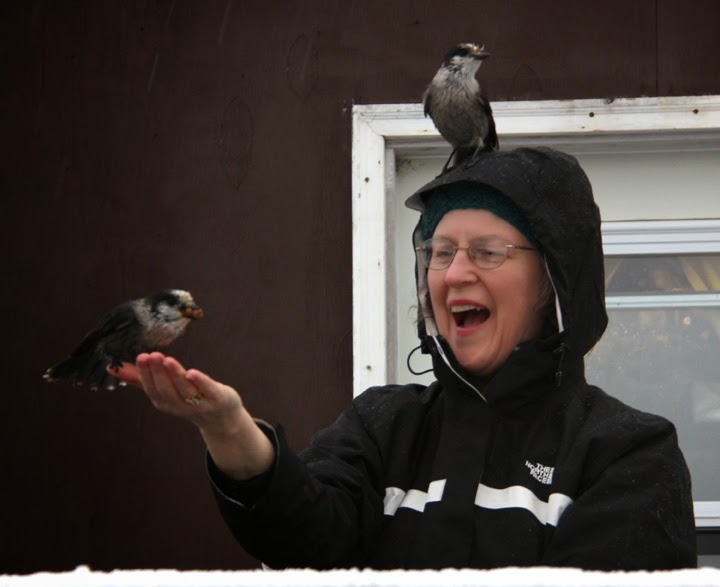The Corvidae family--jays, crows, ravens, magpies--are fast becoming one of my favorite bird families. Each time I get acquainted with a new species, I am enamored.
I encountered my first Gray Jay in Alaska, in 2012, on the campus of the Denali National Park Visitor's Center. Several were scavanging for crumbs around the side walk near where I waited for transportation--a day-making sighting on my last day in the park.
Gray Jay sketch by Vickie Henderson
Gray Jays feed primarily on arthropods, berries, carrion, nestling birds and fungi, such as mushrooms, but they quickly learn to recognize and seek out novel foods, like cheese, raisins, and bread. They cache food by coating the food with copious amounts of saliva produced by their large salivary glands.
After the food is coated, they tuck it under flakes of bark, lichen, or in the fork of a branch, and sometimes add another piece of bark or lichen on top to cover it. In addition to their hoarding habits, these jays have thick, fluffy plumage that can cover their legs and feet while perched and their nares are covered with tiny feathers. The jays in the images above were observed in Riding Mountain National Park, Manitoba, in October, flying from perch to perch as they hunted for insects.
Above, you see me in Churchill, Manitoba, also in October, enjoying the surprise boldness of this species. A succession of jays flew from the trees to take kibbles from my hand on this windy, snowy morning as I stood on the porch at Blue Sky Dog Kennels.
More about Blue Sky and my journey to Churchill to see Polar Bears coming up!
Gray Jay at Cornell
Florida Scrub Jay














No comments:
Post a Comment